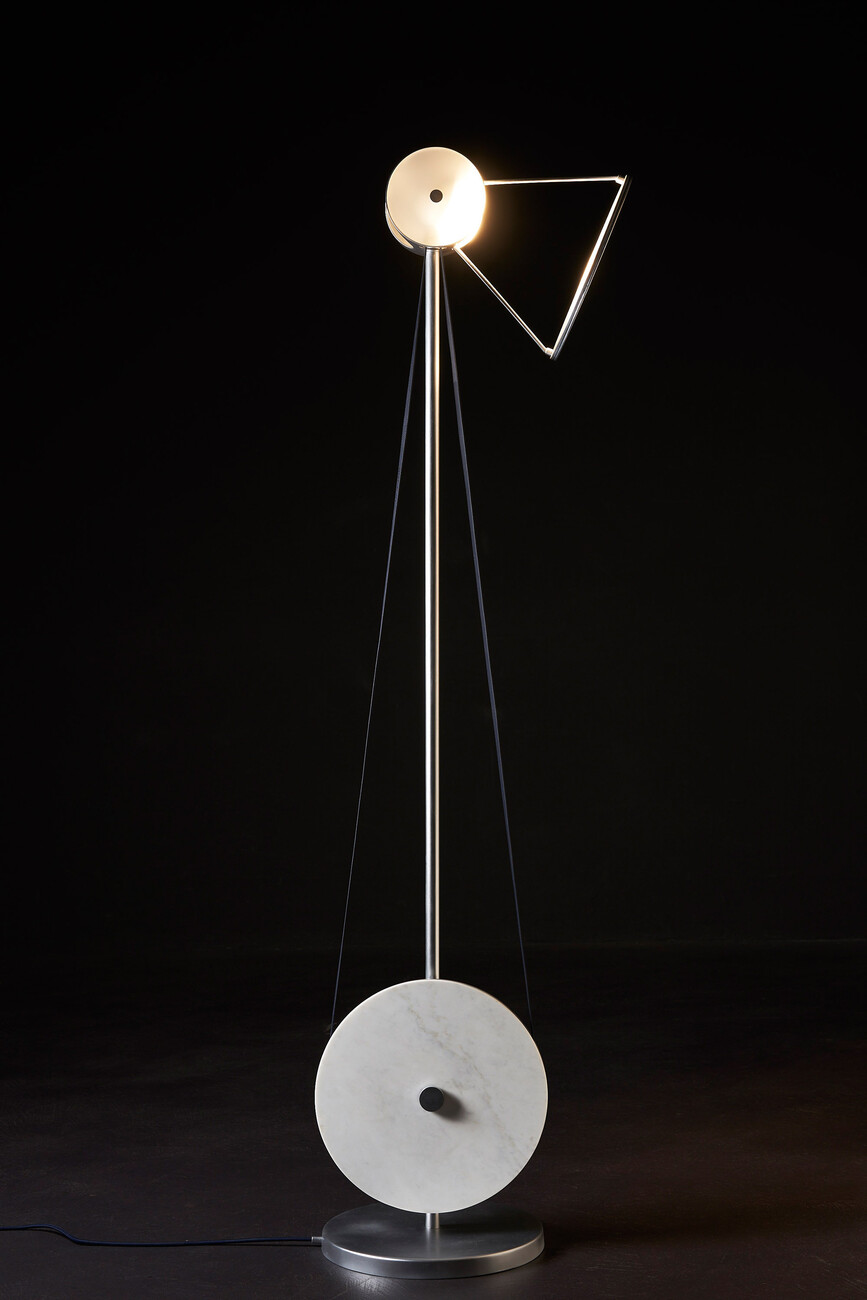Salone del Mobile & Milan Design Week
Courage for the new
The Corona pandemic has made it difficult for young designers in particular to present their works. They frequently lack a real stage on which to present their own ideas and visions to an interested audience and, most importantly, to potential producers. All the better, then, that the exhibition "The Lost Graduation Show" was staged as part of the supersalone, which gave 200 international graduates the opportunity to present their graduation works from the years 2020 and 2021 for the first time back in September. Marianna D’Antimo, Sungkoon Kim, and Filippo Salis took part with their jointly developed lighting series "Tes", the name of which is an anagram of set and points to the photographic sets that inspired the designers to create the lighting system.
Lighting with character
The three young talents studied product design at the Istituto Europeo di Design (IED) in Milan, and "Tes" was created in cooperation with the IED and FontanaArte. As part of the "Identita di Luce" project, the brief was to come up with a lighting collection that would be suitable both for private homes as well as the discerning contract sector of restaurants and hotels. FontanaArte set the students the task of creating models of high comfort that permit various different lighting scenarios, use innovative materials and technologies, and embody the philosophy of the historical brand, albeit as a reinterpretation. Marianna D’Antimo, Sungkoon Kim, and Filippo Salis were still preparing for the presentation of "Tes" to FontanaArte when their professors told them about the opportunity to exhibit at the supersalone. Francesco Librizzi, Art Director of FontanaArte, also awarded "Tes" the title of best project of the IED Milano, which gave the group important recognition in advance.
The resulting "Tes" is rich in contrasts: A slender marble disk stands on its edge on a round metal base, over which a leather strap leads up to the head of the luminaire and the holder of the diffuser. This can be adjusted flexibly by means of the upper head element, so the light can be repeatedly readjusted and the luminaire moved into different positions and silhouettes. The intelligent diffuser is the key element of "Tes", appearing opaque or transparent and providing for richly contrasting, changing light. The designers wanted to involve users actively, encouraging interaction by getting them to touch the light. They describe the result as an interplay of "aggregated forms, compositional contrast, and stage presence". For them, it was important to combine simple, geometrical, and clear contours with specialized technology. This was the basis for their meticulous formal research, for which they began with sketches, then produced the first prototypes using cardboard, and then moved on to 3D printing. "A good product should be simple, accessible, and functional," says Sungkoon Kim.
For the diffuser, they selected PDLC (Polymer Dispersed Liquid Crystal), an electrically switchable film. An LCD film with liquid crystals is therefore layered between two PET films. The team explains: "The panel runs on low voltage. In the OFF position, the liquid crystals are not aligned, so the film is opaque. In the ON position, the liquid crystals loaded by the current align, so the PDLC immediately becomes transparent." It is a clever and elegant detail that only becomes evident when the lights are in use. Marianna D’Antimo also points out the importance of raw materials for "Tes": "We placed great emphasis on the materials in ‘Tes’. If you study the history of FontanaArte, you can see that glass is a key component. The use of marble also brought a uniqueness to the pieces produced. Leather, on the other hand, creates a personal aspect, since it ages together with its owner. We also selected recycled aluminum from the aviation industry as the metal."
What does working with light mean to the up-and-coming designers? "Light enables us to see and enjoy the beauty in everything. Light is emotion. Light determines the scenic presence of an environment. It is important to vary the environment by using accent and ambient light because there is the perfect light for every atmosphere," says Filippo Salis.
























